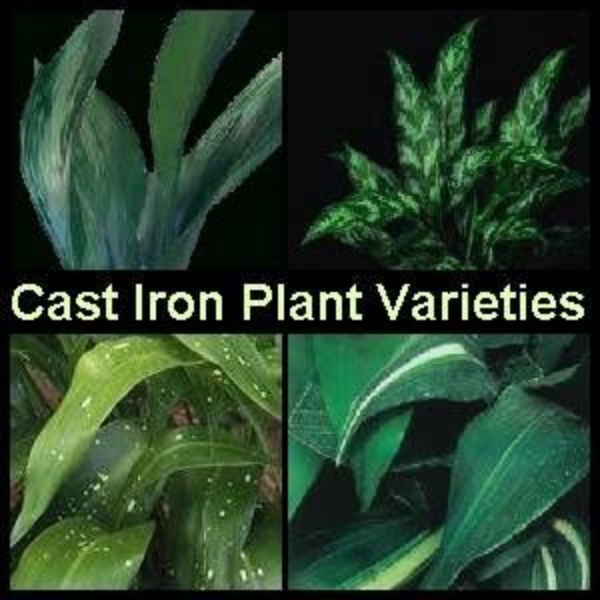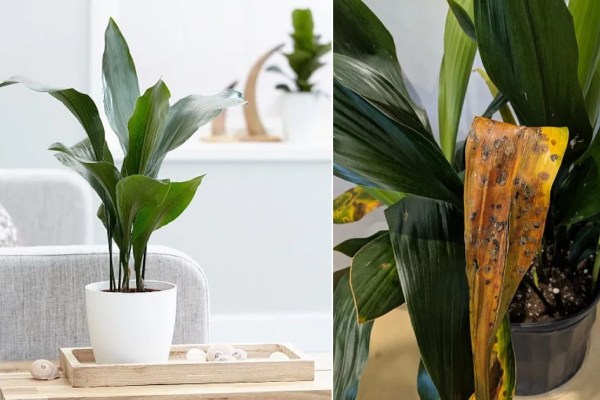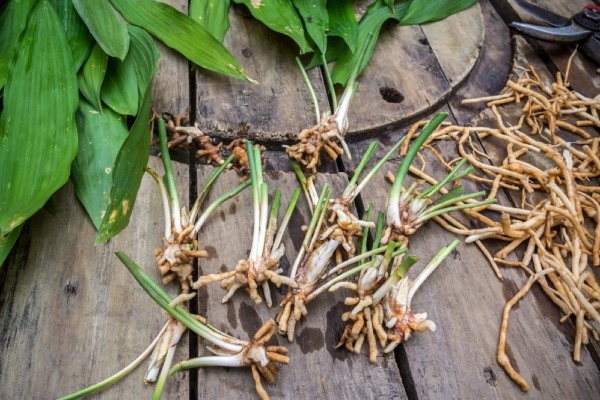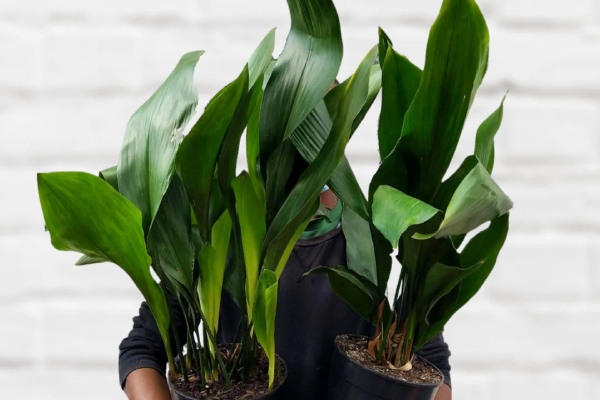Cast Iron Plant, also known scientifically as Aspodostra elatior, is a sturdy, slow-growing houseplant. It is popular due to its luxuriant foliage and low maintenance requirements. This hardy plant has arching, lance-shaped, deep green leaves that can grow up to 2 feet tall and 4 inches broad. This plant rarely produces small, inconspicuous white flowers that bloom on the outside growth. This article will further explain how to grow and care for a Cast Iron Plant for the beginner gardener and those looking to add a low-maintenance plant to their home.
Plant Descriptions
Plant Type: Perennial, Herbaceous
Scientific Name: Aspidistra elatior
Family: Asparagaceae
Common Name: Cast iron plant, Bar room plant
Season: Spring, Summer
Native Area: Japan, China
Types of Cast Iron Plants
Asahi
This cultivar is considered one of the best, with beautiful green leaves and white tips. The leaves may grow up to 20 inches long. If their leaves are mature, then the green colors on them slowly develop into beautiful white tips at the end, enhancing their beauty. “Asahi” literally means “morning sun,” which is appropriate for this plant with a bright, refreshing look. While remarkably resilient, the Asahi retains its coloring well into the winter months to make it a hardy, beautiful addition to any shade garden.
Hoshi-Zora
Hoshi-Zora is a Japanese cultivar whose name translates to “starry sky.” Its leaves are adorned with yellow-to-white speckles, resembling a sky filled with stars. It is one of the more robust leafed varieties of the Aspidistra, going up to 30 inches tall. Hoshi-Zora’s striking foliage and robust nature make it a remarkable addition to any garden or indoor plant collection, providing a touch of celestial beauty and resilience.

Lennon’s song
Lennon’s Song has glossy green leaves adorned with light green or yellow stripes, creating a vibrant and appealing look. Each leaf can grow up to 24 inches tall. Similarly, this variety thrives best in shady spots. It was named after Robin Lennon of Central Florida Foliage, who discovered this unique plant in his fields. When cultivated outdoors, Lennon’s Song may produce delicate flowers during the winter months, adding an extra layer of beauty to this already captivating plant.
Akebono
Akebona is one of the beautiful varieties of cast iron plants with evergreen leaves that can be up to 30 inches long. These leaves feature bright yellow streaks down the lush green colored ones. Similarly, small purple flowers bloom from the base of this plant during late winter. This plant does well in the warm, humid weather most common in southern states. Also, it will grow very well indoors in the northern states with cooler weather and adjust easily to indoor conditions.
Growing and Caring Tips for Cast Iron Plant
The key to growing and keeping a cast iron plant is to never let it be under direct sunlight. That means one should not allow the leaves of the plant to receive direct sunlight. Another thing is not to overwater the plant. Well, Cast iron plants are so resilient that they can thrive even with minimal care. Here are the best ways to care for your cast iron plant so you can grow easily in your home garden.
Light
As mentioned earlier, cast iron plants grow best in bright, indirect light. Place it indoors in an east or north-facing window, though it would also like to be in a southern window. If growing outdoors, keep it in the shade with indirect sunlight.
Soil preparations
These hardy plants will tolerate a great variety of soils, as long as they drain well. They do best in soil with slightly acidic to neutral pH. If you are planting it outdoors, it will grow in sandy, loamy, and even clay soils. For container plants, just purchase a standard quality potting mix.
Water
Cast iron plants do not like to be waterlogged. Although this can be quite a hardy plant, the roots are very sensitive and certainly won’t thrive in soggy soil. Allow soil to dry completely out of water between waterings. Water your plant well, then let it drain out through the holes at the bottom of your pot.

Temperature and Humidity
Cast iron plants don’t like extreme temperatures. They prefer it to be between 60 and 75°F. They don’t handle cold well, and temperatures below 50°F can harm or kill them. If you keep your plant in a container outside, bring it inside before frost. Usually, the humidity in your home is good enough for the plant. But if your home is very dry, adding some extra humidity will help the plant.
Fertilizer
Feed your cast iron plant at least once a month with an all-purpose liquid fertilizer during the growing season of spring and summer, or apply slow-release fertilizer in the spring. Fertilization is not necessary in the fall and winter. Fertilize only right after watering the plant to prevent root burn.
Pruning
Pruning is not usually required for cast iron plants. It does enhance the look of the plant, though, when any leaves that are damaged or diseased are cut off. You can trim the leaves off at the base if you grow them outdoors and want to keep them from getting too large. This will keep them tidy and manageable in shape.
Pests and Disease
Cast iron is relatively insect-free though it may occasionally be attacked by common houseplant pests such as spider mites and scale. Container plants mostly suffer from root rot, which is usually caused by either over-watering or poor drainage. So, it is important not to overwater and to properly drain the plant. If plants become infested, treat them with organic pesticides such as insecticidal soap or neem oil.
Propagation of Cast Iron Plants
Cast iron plants can easily be propagated by division. The best time to do this is in spring or early summer when the plant is growing, but you can do it any time of year. Here’s a step-by-step guide to propagating a cast iron plant:
- Dividing cast-iron plants should be handled carefully since their roots are delicate and can be damaged easily.
- Gently remove the plant from its container and set the clump of the roots on a newspaper. Then, gently pull the roots apart with your fingers.
- Do not use tools like trowels or knives as they can damage the roots. Each section should be provided with at least two to three stems to grow well.
- Put each division in a clean container with fresh potting soil. The container should be just a bit wider than the roots and have a drainage hole.
- Water new plants lightly but keep them moist, but not too wet, until they start growing again.

Conclusion
In conclusion, the Cast Iron Plant (Aspidistra elatior) is a very hardy, low-maintenance house plant known for its shiny, elegantly green leaves. This plant is suitable for growing in both indoor and outdoor gardens and comes in many varieties. Some of the varieties include Asahi, Hoshi-Zora, Lennon’s Song, and Akebono. These cultivars have leaves in many shades and sports patterns, with colors varying from bright greens to starry speckles and beautiful yellow streaks. They are hardy plants, growing in low light and requiring very little care, such as preferably well-drained soil and moderate watering. They easily adapt to environments varying from the humidities of the South to the coolness of northern indoors. Further, propagation by division is quite easy and can be done at any time during the year.
Also read, Why Choose Dwarf English Boxwood as a Hedge Plant in Your Garden?
Frequently Asked Questions
1. What is a Cast Iron Plant?
The Cast Iron Plant (Aspidistra elatior) is a very hardy, low-maintenance house plant known for its shiny, elegantly green leaves. This plant is suitable for growing in both indoor and outdoor gardens and comes in many varieties
2. What are some popular varieties of Cast Iron Plants?
Some popular varieties include Asahi, Hoshi-Zora, Lennon’s Song, and Akebono.
3. What type of soil is best for Cast Iron Plants?
They prefer well-drained soil with a slightly acidic to neutral pH. They can tolerate various soil types, including sandy, loamy, and clay soils.
4. How often should I fertilize Cast Iron Plants?
Feed them once a month during the growing seasons of spring and summer with an all-purpose liquid fertilizer or a slow-release fertilizer in the spring. However, avoid fertilization in fall and winter.
5. How do I propagate Cast Iron Plants?
Propagate by division in spring or early summer. Gently separate the root clump, ensuring each section has a few stems. Plant each section in a container with fresh potting soil, water lightly, and keep moist until they start growing.
